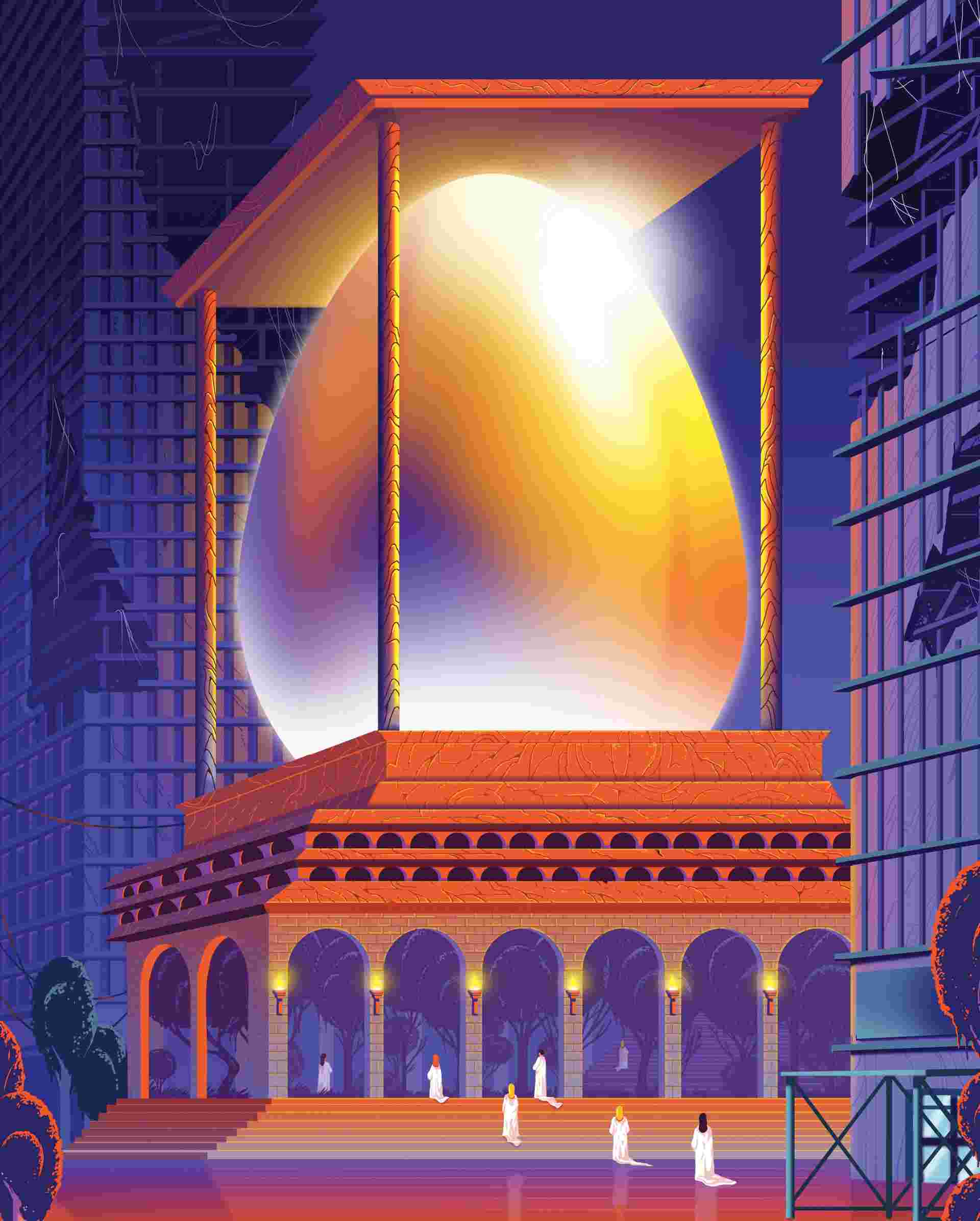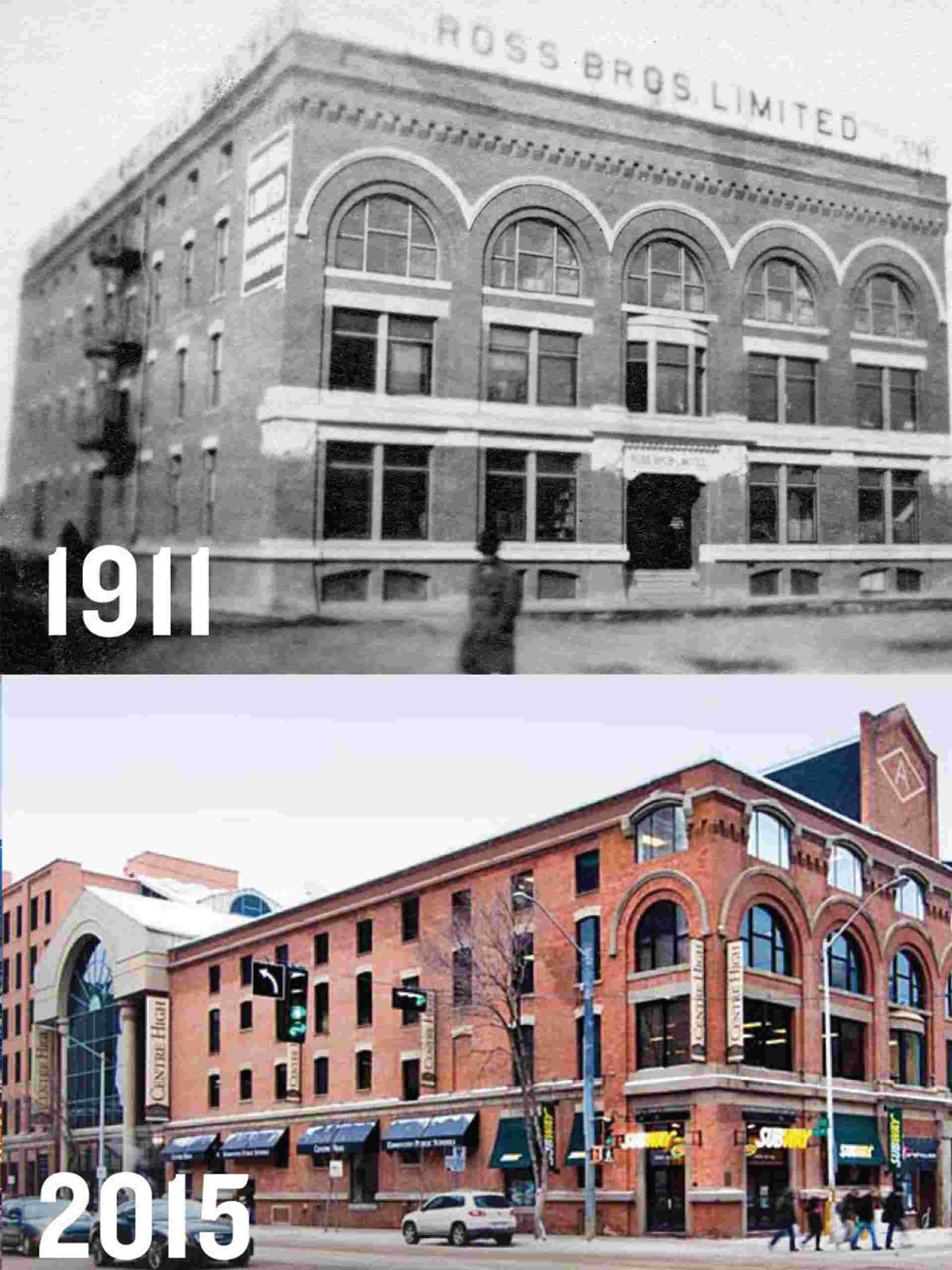
Glenn Harvey
Fill In The Blank Glenn Harvey’s orb-like urban infill
By Sydney Loney

Top : City of Edmonton Archives EB-38
Bottom : Photo courtesy of Allied REIT
In 1883, brothers James and Frederick Ross brought their polished tinsmithing skills from Toronto to Edmonton, making pots, pans, traps and galvanized tubs for the inhabitants of the fast-growing city and the settlers on its outskirts.
What started as a small tinsmithy—a tinsmith’s workshop—soon became one of the largest wholesale and retail hardware businesses in western Canada. The brothers just needed a building worthy of their success in which to house it. In 1910, thanks to Montréal architect Edward C. Hopkins, the Boardwalk at 10310 102nd Avenue joined the ranks of the other hardworking (now-historic) buildings in Edmonton’s warehouse district. The Romanesque Revival warehouse was Hopkins’ best-known work: 139,000 square feet of the time’s most modern amenities clad in brick and stone.
Although the Rosses only spent two years there, the building wasn’t immediately destined to leave the hardware business. The brothers sold it to their supplier, the Marshall-Wells Company, which then sold it to Ashdown Hardware (founder James Henry Ashdown also began his hardware empire as a humble tinsmith in the late 1800s) in 1921.
The Boardwalk remained the city’s hardware headquarters until 1971. In 1986, a prize-winning restoration linked it to the adjacent Revillon Building, and Allied’s acquisition in 2011 saw further enhancements, firmly cementing the Boardwalk Complex as a monument to the forward-thinking entrepreneurial spirit on which it was built.